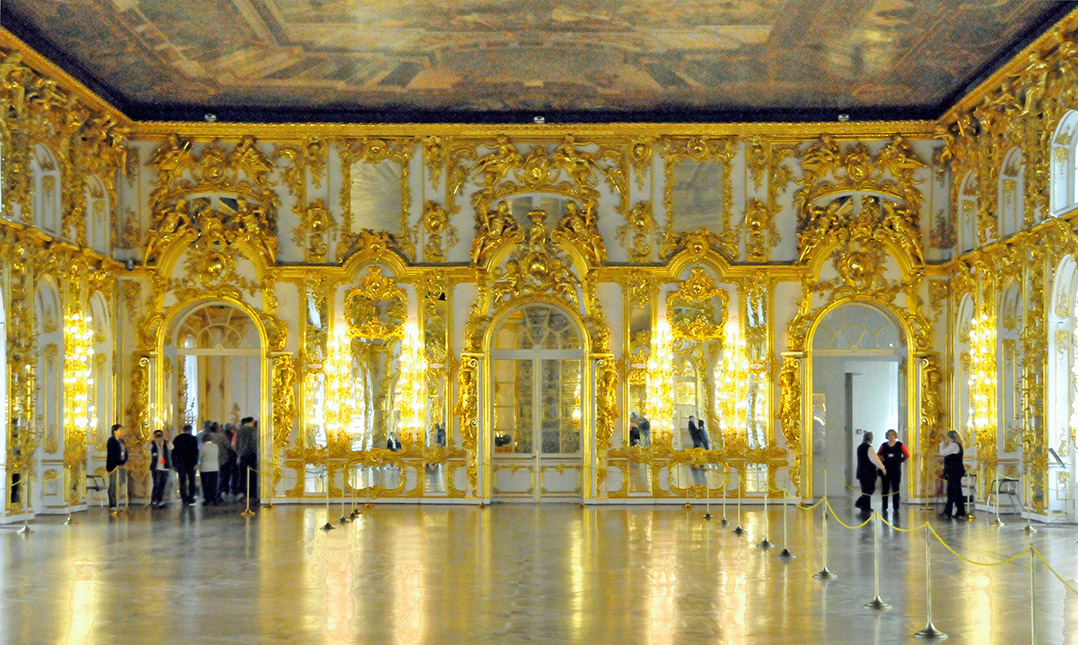Catherine Palace, one of the most popular sites in St. Petersburg, Russia, is a monument to 18th-century extravagance and 20th-century skill.
In 1717, Czar Peter I gave his second wife Catherine a piece of land 20 miles south of St. Petersburg, which he had founded in 1703. Catherine erected a summer palace on the marshy site, which became known as Tsarskoye Selo (Tsar’s Village). In 1741, Elizabeth, the daughter of Peter and Catherine, became empress of Russia. Deciding that her mother’s palace was far too modest, Elizabeth, who reportedly owned 18,000 dresses, demolished it and started over. When completed in 1756, what became known as Catherine Palace stretched 1,000 feet from end to end, its blue stucco exterior ornamented with 200 pounds of pure gold. The lavish interior rooms featured walls with gilded rococo carvings and ceilings covered with magnificent paintings. The 10,000-square-foot Great Room, used for balls and state dinners, extended the width of the palace. Because of its large windows, mirrors and 696 candles, people called it the Bright Room. When Catherine the Great became empress in 1762, she said the palace resembled whipped cream and rebuilt parts of it to reflect her neo-Classical tastes.
During the siege of Leningrad, as St. Petersburg was then known, Nazi troops used Catherine Palace as a barracks. During their retreat in 1944, the troops set fire to the palace, destroying much of it, including the Great Room, which collapsed. Relying on historic sketches, the Russian government restored many of the rooms, with the some of the funds coming from a benefit concert held in the Great Room by Elton John. The meticulously restored rooms reopened to the public in 2003, the 300th anniversary of the founding of what is again St. Petersburg. Visitors can see photographs of the rooms after their destruction.



